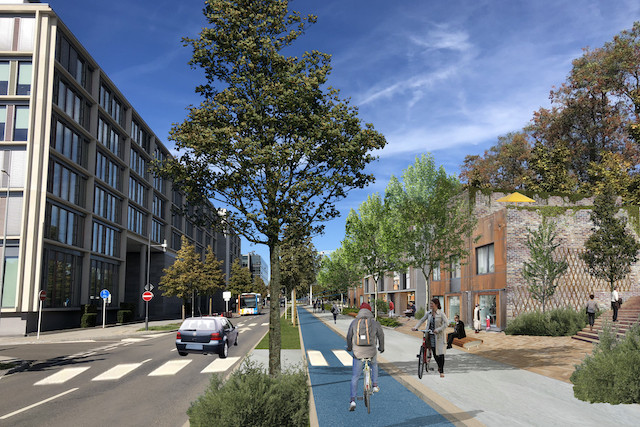Røhl explained that when the team set out to troubleshoot the district, they noticed there were pockets of local life and high-quality architecture on one hand but a “sea of carparking” and inefficient use of empty spaces on the other hand.
“I’ve never cycled so much in car parks to get around than here [on Kirchberg],” he said.
People at the centre
The firm, Gehl, is named after its founder, the architect and urbanist Jan Gehl, and the team is renowned for thinking about urban spaces for people, placing humans at the centre. Their work was featured in the 2012 film, The Human Scale, which probes viewers to think differently about how cities are built, particularly in light of growing population requirements.
In Luxembourg City, Røhl and Reigstad noticed that even though there was diverse transport, cars still dominated--a problem Røhl believes will be exacerbated in future, unless car market share declines in the coming years with respect to Luxembourg City’s anticipated population boom.
The two were part of a team of five charged with analysing Kirchberg, but they worked with local actors including the ministry of transport, the Fonds de Kirchberg and IMS, to name a few.
According to Reigstad, the work involved more than getting a feel for the city themselves: they also analysed surveys based on locals’ feedback about the district, held workshops and so on. They even counted pedestrians and noticed what she calls a “lost potential” for them, for example, with their waiting times at intersections, or the fact that green spaces like the “Parc Central” near the Coque weren’t immediately obvious to passers-by.
Among their findings: 1.5 times more people stay at the Kiem School entrance than the Auchan northern plaza at peak times, but it isn’t necessarily for a lack of locals wanting to hang around Kirchberg: 38% of their interviewees wanted more nature and green spaces, while many called for better cycling paths, shared infrastructure and community happenings.
New vision for Kirchberg
Among the proposals put forward by the firm were having ground floor levels of buildings engage more with outdoor spaces. Reigstad said there were plenty of opportunities for “small gestures”, such as integrated, “active” features on building facades, which could include public benches, for example.
When it comes to the bicycle network, Røhl said there needed to be a “holistic effort” to improve the current situation. “Streets are seen as corridors for [car] traffic, but this approach should change.”
One of the case studies Gehl presented, which transport minister François Bausch thinks could be achieved relatively quickly, involves revitalising the Rue Erasme, near the roundabout between the Luxembourg Chamber of Commerce and the Coque.
The Gehl associates realise this is a critical corridor but, Reigstad says, “it creates detours for cycling and walking”, plus there are introverted buildings. The team could imagine, however, the reduction of car lanes in order to have a cycle lane, possibly even a flexlane for short-term parking, the creation of active walls on housing, which would also harmonise the link to the nearby park.

What the future could look like for the avenue JF Kennedy Image: Gehl
Also envisioned along avenue JF Kennedy would be active commercial zones--in line with the recent Infinity concept, the shops of which are set to launch mid-December--plus a flexlane, cycle track, increased public furniture and greenery.
Looking forward to 2035
Bausch said the next steps would be to determine which plans could be achieved in the short term, which over the longer term. As the minister acknowledged, certain concepts have already taken off--enhanced seating at Place de l’Europe, for example, and in future more outdoor concerts and events are expected to be put on by the Philharmonie, for example.
Concepts are already under discussion as well concerning plans by 2035: by then, Bausch hopes there will be a connection on Kirchberg to the main train network, so that commuters coming from the east will have a much easier time getting the district and, by extension, into the centre.
